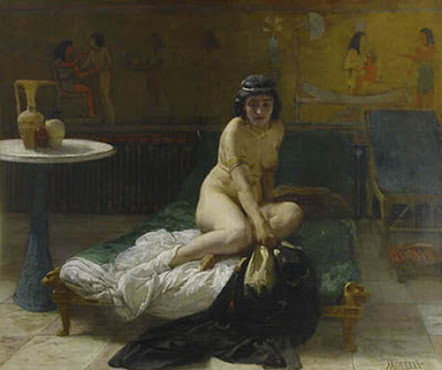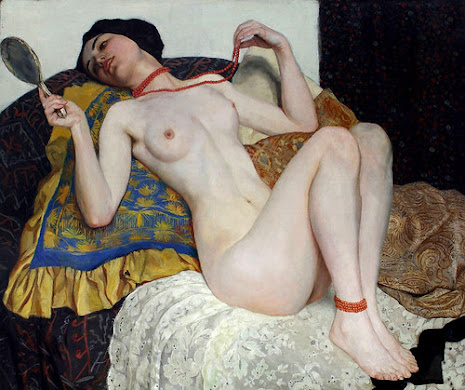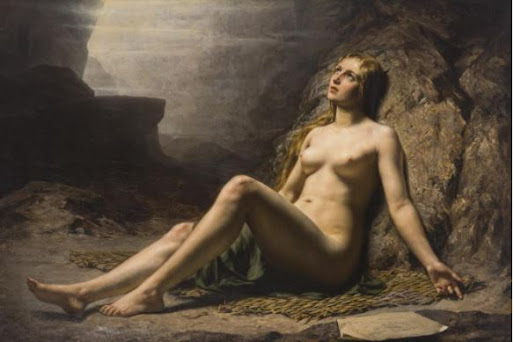Potiphar
Potiphar’s Wife, Domenico Morelli (1823-1901)
Potiphar, also known by the title of Al-Aziz in Islam, is a figure in the Hebrew Bible and the Quran. Potiphar is the captain of Pharaoh's guard who is said to have purchased Joseph as a slave and, impressed by his intelligence, makes him the master of his household. Unfortunately, Potiphar's wife, who was known for her infidelities, took a liking to Joseph, and attempted to seduce him. When Joseph refused her advances, and ran off, leaving his outer vestment in her hands, she retaliated by falsely accusing him of trying to rape her, and Potiphar had Joseph imprisoned. The false accusation by Potiphar's wife plays an important role in Joseph's narrative, because had he not been imprisoned, he would not have met the fellow prisoner who introduced him to Pharaoh.The medieval Sefer HaYashar, a commentary on the Torah, gives Potiphar's wife's name as Zuleikha, as do many Islamic traditions - thus the Persian poem called Yusuf and Zulaikha from Jami's Haft Awrang ("Seven thrones").The story became a very common subject in Western art during the Renaissance and Baroque periods, usually depicting the moment when Joseph tears himself away from the bed containing a more-or-less naked figure of Potiphar's wife.
Joseph and Potiphar's Wife, Gentileschi, (1563-1639), 1626, Orazio Gentileschi, Royal Collection Trust.Joseph and Potiphar's Wife, Guido Reni (1575-1642), 1630, The J. Paul Getty Museum.
Joseph and Potiphar's Wife, Cigoli (1559-1613), 1610
Joseph Accused by Potiphar's Wife, by Rembrandt van Rijn, 1655.
A painting of Yusuf and Zulaikha, from the Metropolitan Museum collection.
Jacopo Robusti (Tintoretto), Joseph and the Wife of Potiphar, ca. 1555, Museo del Prado.
Joseph and Potiphar’s wife in art: Balthasar Griessmann, Joseph and Potiphar’s Wife, ca. 17th century, The Metropolitan Museum of Art, New York, USA.
Joseph and Potiphar’s wife in art: Filippo Falciatore, Joseph and Potipher’s wife, ca. 1737–1768, Crocker Art Museum, Sacramento, USA
Joseph and Potiphar’s wife in art: Joseph Kuhn-Régnier, Joseph and Potiphar’s wife, 1910, Source: Wikimedia Commons.
Joseph and Potiphar's Wife is a 1640–1645 oil on canvas painting by the Spanish artist Murillo, now in the Gemäldegalerie Alte Meister (Kassel).





























Comments
Post a Comment